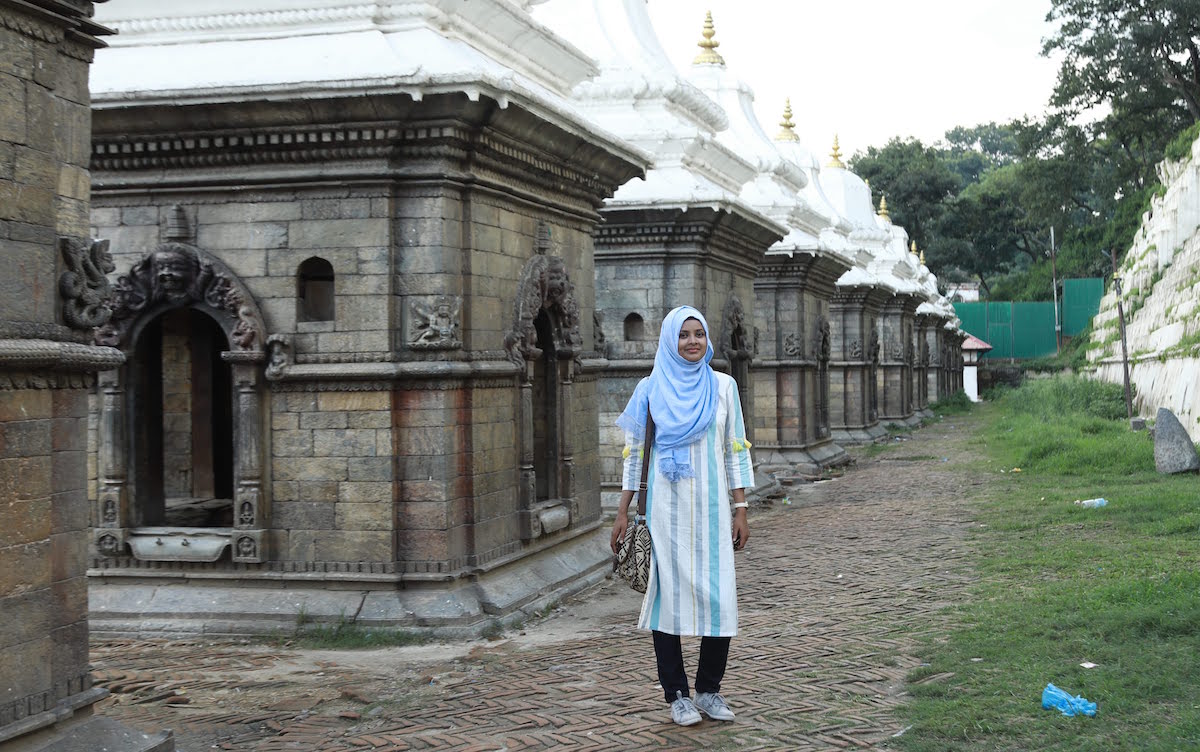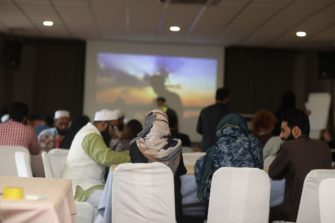
The Madrasa Discourses 2018 summer intensive brought together a diverse and vibrant group of people in an intellectually stimulating environment in Nepal. The participants—who included madrasa graduates from India and Pakistan, students from South Africa and the University of Notre Dame, and faculty members from India, Pakistan, the United States, and South Africa—helped bring different perspectives to discussions on the challenging issues of Islamic legal tradition and gender justice, human nature and the body, conflict and peacebuilding, pluralism and inter-faith dialogue, and Muslim responses to modernity.
For instance, how did the medieval mercantile society define and value different bodies? Under what legal assumptions could one buy, sell, own or manumit another human? How was the full or partial tamlik (ownership) of another’s body legally thought about? How many kinds of ownership were there? How did these assumptions shape what we have inherited as Islamic law? And, do modern Muslims share those assumptions? Some of these questions kept us thinking during the three days of lectures and discussions with Dr. Saadia Yacoob from Williams College, USA. Most of us had never heard of the term tamlik, while others had read it in the madrasa without giving it much thought. However, this term, when it cropped up in Yacoob’s lecture, became a focus of long discussions and a cause of acute discomfort for many. The readings assigned by Dr. Yacoob were a collection of dense and nuanced texts on Islamic law, including Sexual Violation in Late Antique Near East by Hina Azam, excerpts from Her Day in Court by Maya Shatzmiller, 11th century jurist Al-Sarakshi’s Kitab al-Mabsut’s portion in which he writes about zina (adultery) and legal accountability and Kecia Ali’s article from Progressive Muslims on Justice, Gender and Pluralism. Why, then, did only a single concept, tamlik, elicit unending explanations and discussions from the participants from India and Pakistan?
Azam’s piece on sexual violation in the pre-Islamic period in the Middle East discusses two competing systems of ethics—propriety and theocentric—that shaped legal thinking on sexual violation and women’s autonomy across various legal systems, including Ancient Mesopotamian laws, Mosaic and Rabbinic laws, Roman and Christian laws and pre-Islamic Arabian customs. Propriety ethics regarded “sexual violation of females as primarily a property crime, akin to usurpation—the unlawful taking of another’s possession for one’s own use—or abduction—the unlawful removal of live property from the control of its owner” (p. 24). Propriety ethics views sexual violation as a crime of a man against another man; therefore the remedy consists of the violator paying the wronged party, that is, the father or husband of the woman, as compensation for his loss. Theocentric ethics, on the other hand, regarded sexual violation as a transgression against God, that is, a sin. Theocentric logic therefore required physical punishment of the violator, rather than simply a monetary compensation for the theft of female sexual and reproductive capacity. Legal thinking about the female body reflected a tension between the two types of ethics that co-existed in varied combinations in ancient Middle Eastern legal texts, which formed the context for Islamic legal discourses on the topic later on. Maya Shatzmiller discusses the monetary value assigned in Islamic legal discourse to different bodily functions such as intercourse, breastfeeding, pregnancy, and taking care of the young (pp. 93-117). First intercourse, that is, the consummation of marriage, triggers property rights of mahr (dower) and nafaqa (maintenance) for the bride, while pregnancy triggers property rights of the unborn child.
Al-Sarakshi’s text is one of the Hanafi legal positions on the punishment accorded to a man and a woman engaged in zina (adultery) in different scenarios of legal accountability and consent (pp. 54-55). The case of a mature and sane woman involved in a consensual illicit sexual act with a mature and sane man led to both being punished. If the woman does not consent, is a minor, or is insane, she is not punished but he is. However, if the man is insane or a minor and therefore not legally accountable he is not punished, but interestingly, the woman also goes unpunished. Al-Sarakshi reasons that since the primary doer in the sex act is a man (the woman being the locus) she cannot be punished if he is not. Moreover, in any of the above scenarios, the man is being punished for committing adultery whereas the woman is punished for making herself available and therefore facilitating adultery. Dr. Yacoob assigned this reading to tease out the assumptions about human sexuality at play in legal rulings and to point out that if these assumptions are taken away, the internal logic of the laws crumbles. Therefore, religious texts are not interpreted in a vacuum by the jurists, but with some presumptions that shape the legal rulings.

Finally we turned to Kecia Ali’s argument that in Islamic jurisprudence, “the overall framework of the marriage contract is predicated on a type of ownership (milk) granted to the husband over the wife in exchange for dower payment, which makes sexual intercourse between them lawful” (p. 165). Marriage, as understood in Sunni schools of Islamic law, therefore is an exchange of exclusive sexual access to the wife in return for dower (mahr) and her continued sexual availability in return for financial support (nafaqa) by the husband. A husband’s right to unrestricted sexual access to his wife also allowed him to control her mobility. The idea of ownership contained in these terms used in juristic discussions on marriage prompted a large number of responses from the Madrasa Discourses summer intensive participants. Many tried to explain that tamlik really doesn’t mean ownership or that there are different kinds of ownership, that a husband’s ownership of a wife is different from the way one owns an inanimate object or a slave, and also that modern Muslims don’t think about their wives as their possessions. One participant shared how a friend’s joke about owning his wife caused a lot of uproar in the families on both sides, due to which he had to apologize to his wife. This whole discussion, and the discomfort around the term tamlik, is precisely what Ali pre-empts when she argues that this way of thinking about marriage is “unthinkable today for the majority of Muslims” (p. 165).
By the end of Dr. Yacoob’s session, heads were spinning, both because none of the participants had thought about Islamic law in this perspective, but also because it was liberating and scary at the same time. It was paradigm-shifting to recognize that in the formative period of Islamic law, gender norms were the outcome of human interaction with the texts, and different presumptions or approaches to the texts could have and did lead to different legal rulings. This liberates Muslims to rethink Islamic legal tradition. This rethinking, however, is not going to be smooth or painless. It requires a constant struggle with oneself and one’s beloved tradition, one’s identity and the political realities of Muslim communities around the globe that shape popular discourses and attitudes.
References
Ali, K. (2006). Progressive Muslims and Islamic Jurisprudence: The Necessity for Critical Engagement with Marriage and Divorce Law. In O. Safi, Progressive Muslims on Gender, Justice and Pluralism (pp. 163-189). Oxford: One-World Publications.
al-Sarakhsi. Kitab al Mabsut. Beirut: Darul Marifa. (الجز اللتاسع من كتاب المبسوط لشمس الدين السرخسي, دار المعرفة, بيروت-لبنان)
Azam, H. (2015). Sexual Violation in Islamic Law: Substance, Evidence and Procedure. New York: Cambridge University Press.
Shatzmiller, M. (2007). Her Day in Court: Women’s Property Rights in Fifteenth-century Granada. Massachusetts: Harvard University Press.

